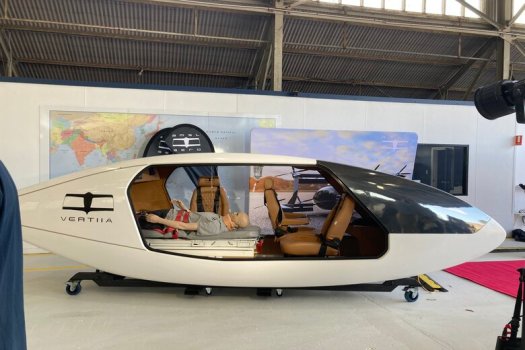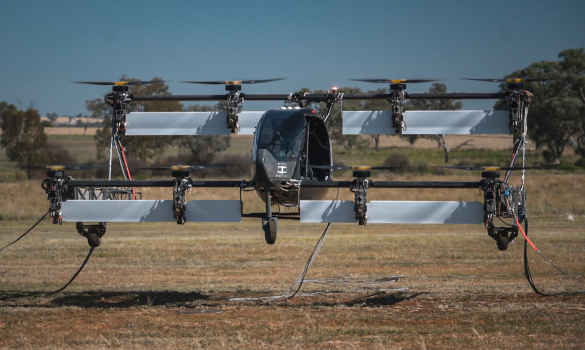Bankstown Mayor Bilal El-Hayek used a recent local industry event to extol the world’s first hydrogen powered ‘flying car’, which is being developed at Bankstown Airport and hopes to be in commercial use in regional Australia by 2027.
Comparing the ‘Vertiia’ to the 1960s sci-fi animation series the Jetsons, Mayor El-Hayek said the concept was no longer just pie in the sky. “Flying cars, who would have ever imagined it?” he said.
While the vehicle is officially what’s known as a Vertical Take Off and Landing aircraft, or VTOL, and is yet to take flight, Mayor El-Hayek’s hype isn’t too far off.

An electric-battery powered prototype of the Vertiia successfully underwent preliminary testing while tethered to the ground at Dubbo Airport earlier this year, and on Thursday received a $5.43 million ARENA grant, the agency’s first for hydrogen aviation.
ARENA says the grant will support Vertiia’s maker AMSL Aero to undertake development and certification activities for the aircraft, culminating in a demonstration test flight.
If successful, the aircraft will be one of the lowest cost and cleanest forms of air transport for ranges up to 1,000km, ARENA says.
Targeting long-range flights
The Vertiia is fitted with eight rotors, doesn’t require a runway, and is powered by a hydrogen fuel cell system. It will be capable of carrying up to five passengers over distances up to 1000 km, travelling 300/kph and reaching 10,000 feet.
It will initially be used for regional aeromedical purposes but is also suited for use by defence and emergency services, as well as cargo and passenger transport.
AMS co-founder and COO Siobhan Lyndon told the Bankstown City Council’s CBEvolve event that Vertiia is unique because it specifically targets long-range flights rather than urban mobility, which has been the focus of similar aircraft overseas.
“There’s hundreds across the globe that are in all stages of development, but we’re the first in Australia to develop this type of aircraft,” she said.
“Another thing that’s different about Vertiia is that we are targeting right from the beginning a long range VTOL. That means something that can take you from here out to any part of NSW non-stop.”

Commonplace in ten years
The technology is no longer just a futuristic thought bubble, co-founder and ASM CEO Andrew Moore says.
“We’re building it, we’re flying it, we’re testing it,” he told Government News.
“We’re looking at having it certified by the end of 2026. So that means we’ll be able to start commercial production shortly after that.
“Ideally we’d like to see a few in the air operating, working commercially around that 2027 timeframe and scaling up as rapidly as we can scale the manufacturing process.
“Early uses will be in regional Australia … but over time it will become more and more the norm for transport. Longer term it will become the transport method of choice for things like Sydney to Melbourne and Sydney to Brisbane.
“In my view its going to become commonplace in five to 10 years.”
Based at Sydney’s Bankstown Airport, AMSL Aero was founded in 2017 to develop and manufacture zero emissions aircraft.
“Developing low emissions air transport will require a variety of solutions, including hydrogen and battery electric. AMSL’s work on the Vertiia is truly pioneering in this space,” ARENA CEO Darren Miller said.
The development of Vertiia has received additional support from the Australian Government via the Emerging Aviation Technology Partnerships program.





Leave a Reply